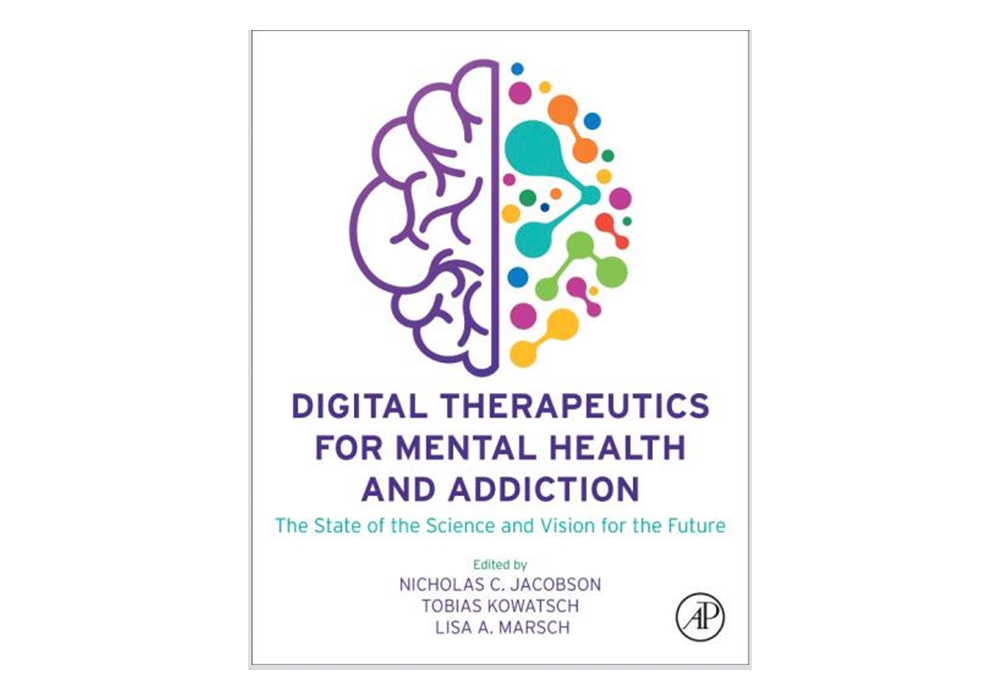Book Chapter Sneak Peek: Introduction and aims of digital therapeutics for mental health and addiction
In this first post in a series highlighting the new textbook “Digital Therapeutics for Mental Health and Addiction: The State of the Science and Vision for the Future”, we would like to share some first insights into chapters 1 and 2 with you.
Chapter 1: Introduction: A vision for the field of digital therapeutics
In this first chapter, the book’s editors Jacobson, Kowatsch and Marsch “introduce a comprehensive overview of the field of digital therapeutics and research on their efficacy, effectiveness, scalability, and cost-effectiveness (pp. 1).” The authors are looking to introduce the topic of digital therapeutics to a broad audience and designed this book for people without a background in mental health or substance use. The authors’ vision includes conveying how advancements in technology can be leveraged to increase the effectiveness of interventions. Topics relating to structural considerations include the design of interventions, cultural adaptations, regulation, and data privacy.
The authors further motivate readers with the books’ aim of providing a strong foundation in understanding the relevance of digital therapeutics, as well as the current evidence base in digital therapeutics.
Chapter 2: Using digital therapeutics to target gaps and failures in traditional mental health and addiction treatments
The second chapter looks at how traditional treatments are failing patients with mental health issues or substance use disorders. What cultural and systematic issues are getting in the way of patients with mental health and substance use issues receiving care? Do digital therapeutics have the potential to help and if so, might they offer scalable care?
The authors Jacobson, Quist, Lee and Marsch provide an overview of the most common barriers faced by patients, backed up by literature. The authors describe different ways in which digital therapeutics are poised to address these shortcomings. The chapter thereby “provides an overview of the current gaps and failings of the traditional mental health and addiction care system, including how and why most persons needing mental health treatment do not receive it. The chapter then introduces and defines digital therapeutics, and discusses how digital therapeutics can be used to help remedy gaps in the traditional care system (pp. 2)”.
Interested in this book?
- You can learn more and order a copy from Elsevier.
- Further posts on the book will be published on our Project Page.




